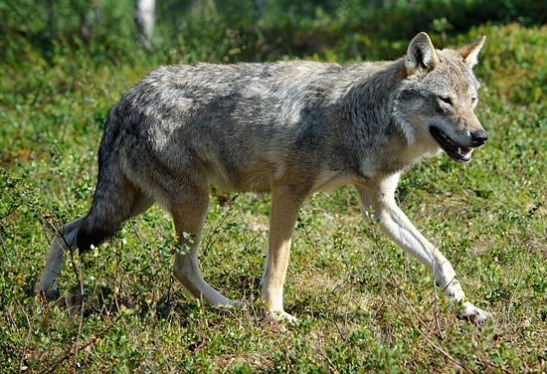A few days ago the Wall Street Journal published a charming and amusing story in which the narrator is a wolf. A four-year-old, gray male wolf, to be exact.
Fitted with a GPS tracking collar while still a pup, this wolf is known to the wildlife authorities who monitor his movements as OR7.
Everyone agrees it had been more than 80 years since any confirmed sighting of a gray wolf in California. Thus, when this particular wolf crossed the Oregon border into the Golden State in late December 2011, he became a minor celebrity.
OR7 has since returned to Oregon, but his visit served as a catalyst. It caused four environmental organizations to take leave of their senses.
In February 2012, a mere nine weeks after OR7 wandered into California, the Center for Biological Diversity, Big Wildlife, the Environmental Protection Information Center, and the Klamath-Siskiyou Wildlands Center jointly petitioned to have the gray wolf declared an endangered species under California’s Endangered Species Act.
The 36-page petition appears here – and is backed up here.
Despite the fact that only a single such wolf existed in the entire state, the petition wanted this species to be declared “endangered throughout its range in California.” The italics here and below are mine.
The petition says that
There can be no doubt that human-caused mortality in the form of.vehicle strikes is a primary threat to gray wolves in California.This threat is likely to increase in California as human development continues to fragment wolf habitat.
Except that there are no gray wolves – plural – in California to be hit by automobiles. Thus there can be no established gray wolf habitat.
The petition calls on the government to list the gray wolf as an endangered species and to “develop a management scheme” for its protection due to the mere “possibility that gray wolves are already naturally dispersing to California.”
Gray wolves are not in danger of going extinct anytime soon. More than 6,000 of them reside in America. Canada is home to 50,000 – 60,000 of them. As many as 100,000 live in Asia.
Just last week, the US federal government announced its intention to remove the gray wolf’s “endangered” status nationwide.
But according to last year’s petition, this animal deserves the full protection of a California law that punishes violators with criminal penalties – and exposes private landowners to lawsuits filed by green groups.
The petition says roads are harmful to gray wolves. So are farmers protecting their livestock. So are domestic dogs – from whom wolves may contract disease.
According to this petition, the growth in the human population of California is also “a threat to gray wolf survival and recovery in California.”
These four environmental organizations believe the activities of the 38 million human beings who currently reside in California come second. They are prepared to interfere with the freedoms of their fellow citizens because a single wild animal has crossed an imaginary line on a map. An animal whose species is by no stretch of the imagination at risk of disappearing from this planet.
This is not what endangered species legislation was supposed to be about.
Read the Wall Street Journal‘s fun piece, Lone Wolf Seeks Same. It’s backed up here.






